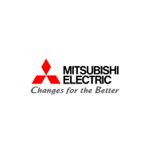Water utilities need to embrace technology to achieve lean production and effective savings
Water utilities companies spent more than £25 billion during AMP5 and costs are likely to spiral further. So the advice from Jeremy Shinton, Business Solutions Manager at Mitsubishi Electric, is that companies must take stock of their assets and wring out maximum efficiency from every part of the water delivery process for the AMP6 period.
Growing costs of energy, transport, and other “Raw” materials to the water process business mean that water utility companies have to look deeper into their souls to gain “margin” to pay investor dividends. Constraints applied by the regulators mean that prices can’t be increased beyond those agreed on an individual basis with OFWAT, except by applying the “K” factor which allows the water companies to increase their prices by an agreed percentage over and above the determination value.
New high efficiency water and waste water treatment plants
During the last five years, water industries have been busy with the implementation of the capital projects that were agreed as part of their OFWAT submissions. AMP5 has been mainly around the development of new high efficiency water and waste water treatment plants and new methods of producing energy from the process as a by-product. This has seen the water companies build various energy plants such as Bio Gas, Thermal Hydrolysis and Sludge Incineration plants.
Many of the water utility companies are beginning to treat the process like that of a large factory enterprise, with OEE or lean production processes in mind. There are many differences between a water treatment plant and a food or automotive manufacturing business, but there is the same driver; to eliminate waste and reduce processing and overall business costs.
The seven manufacturing wastes
The seven manufacturing wastes (as defined by Ohno in the Toyota Production System) are:
- Over production.
- Waiting (by operators and machines).
- Transportation of materials.
- Unnecessary or over complicated processes.
- Excess stock or materials.
- Excess movement by operators.
- Defective products.
If we take “transportation of materials” as an example, we could apply this to utilisation of tanker transportation which could result in significant cost reduction in fuel bills for the business. There are many other areas in which lean production principles can be applied, such as sludge treatment and optimisation of energy production, intelligent use of maintenance and predictive maintenance, with links to ERP and asset job cards creating a holistic approach to the business needs.
Technology key to lean production and effective savings
Utilising technology to implement lean production strategies will be crucial to generate effective savings. Although a great deal of hype surrounds the terms “Internet of things”, “M2M” and “big data”, they will be instrumental technologies that all businesses will have to embrace. The ease of data flow that these technologies will bring will revolutionise the information available to managers and operators, enabling them to model the response of the process network to the weather conditions and the demand requirements.
The water companies are extremely tightly regulated and must provide the government with statistics on how well they are operating. From extraction of raw water, to final delivery to the tap, and on collection of waste water through treatment and back to the rivers and reservoirs. This necessitates the need for them to use all of the processes mentioned above, especially as AMP6 will require the water companies to undertake activities that will extend the life of their plants and apply a TOTEX methodology.
Mitsubishi Electric is leading the way with this by assisting water utilities companies to improve their operational efficiency by implementing systems to collect operational data that will transform their maintenance strategies. It is also assisting businesses to ensure that their plant operates within its optimum parameters and provides the maximum amount of energy possible in the case of sludge plants for example. This provides them with a much improved ROI ratio and a longer lasting plant, therefore reducing the TOTEX costs.
Get the latest process industry news
Interested in receiving even more industry-leading news from Process Industry Forum delivered directly to your inbox? Then sign up to our free newsletter. Bringing you the latest news, trends, innovations and opinion from across the process industry, our exclusive newsletter gives you all the industry insights of the moment in one, easy-to-digest bulletin. Stay ahead of the competition with regular process industry news instalments from PIF.


